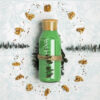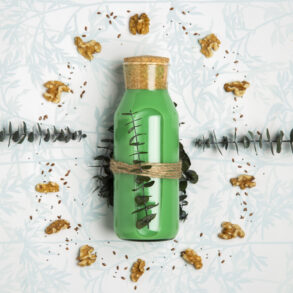The term “animal cuts” might seem straightforward, but it covers a broad spectrum of practices.
These practices involve cutting or trimming animals’ fur, hair, hooves, or other parts. The reasons behind animal cuts are diverse.
They can range from maintaining hygiene and health to enhancing aesthetics or improving the animal’s comfort.
In this blog post, we will explore the different aspects of animal cuts.
We will look at the types of cuts, the reasons for them, and the controversies surrounding this practice. We will also discuss how to perform animal cuts safely and humanely.
Types of Animal Cuts
Animal cuts can be classified into several categories based on the animal and the purpose of the cut. Here are the main types:
- Pet Grooming: This is the most common type of animal cut. It involves trimming the fur or hair of pets like dogs and cats. Grooming helps keep pets clean and comfortable.It can also prevent health issues such as skin infections or matting.
- Livestock Trimming: Farmers often trim livestock like sheep, cows, and goats. This can involve shearing wool from sheep or trimming hooves.These cuts help maintain the animals’ health and productivity. For example, shearing sheep prevents overheating and promotes better wool growth.
- Show Cuts: Animals that participate in shows or competitions often receive special cuts. These cuts are designed to highlight the animal’s best features. Show cuts require skill and precision. They can be quite elaborate, especially for breeds with long or thick fur.
- Medical Cuts: Sometimes, animals need cuts for medical reasons. This can include shaving fur for surgery or trimming hooves to prevent infections.Veterinarians usually perform these cuts. They ensure that the procedure is done safely and hygienically.
Reasons for Animal Cuts
The reasons for performing animal cuts vary widely. Here are some of the main purposes:
- Hygiene: Regular trimming helps keep animals clean. For pets, this can mean fewer baths and less dirt tracked into the home. For livestock, it can prevent diseases and parasites that thrive in long fur or untrimmed hooves.
- Health: Cuts can prevent or treat health issues. For example, trimming a dog’s fur can help manage skin conditions. Shearing a sheep prevents overheating in hot weather. Regular hoof trimming can prevent lameness in livestock.
- Comfort: Long fur or hair can be uncomfortable for animals, especially in hot climates. Trimming can make them feel more comfortable and happy. For example, a dog with thick fur may pant less and play more after a haircut.
- Aesthetics: Many pet owners and breeders trim animals to improve their appearance. This is especially common for show animals. A well-groomed pet or livestock can also be more pleasing to look at, which is important for those who take pride in their animals.
- Performance: For working animals, such as horses or sheepdogs, cuts can enhance performance. Trimming can reduce weight and improve agility. It can also help the animal stay cool and focused during work.
Controversies Surrounding Animal Cuts
While many see animal cuts as beneficial, there are controversies surrounding the practice. Here are some of the main issues:
- Animal Welfare: Some people argue that certain types of cuts are cruel. They believe that unnecessary trimming can cause pain or stress. This is especially true for show cuts, which can be very elaborate and time-consuming.
- Over-Trimming: There is a risk of over-trimming, which can harm the animal. For example, cutting fur too short can expose the skin to sunburn. Trimming hooves too closely can cause bleeding and lameness. It is important to strike a balance and trim only as much as necessary.
- Cultural Differences: Different cultures have different views on animal cuts. What is considered normal in one culture may be seen as cruel in another. For example, some cultures consider ear cropping and tail docking in dogs to be standard practice, while others see it as inhumane.
- Regulation: There is often a lack of regulation in the grooming industry. This means that anyone can call themselves a groomer without proper training. Poorly trained groomers can cause unintentional harm to animals. Advocates are pushing for stricter regulations and certifications for groomers.
How to Perform Animal Cuts Safely
If you decide to trim your animal, it is important to do it safely. Here are some tips:
- Use the Right Tools: Make sure you have the appropriate tools for the job. This can include clippers, scissors, and hoof trimmers. Using the wrong tools can hurt the animal.
- Learn the Proper Techniques: Educate yourself on how to perform the cut correctly. There are many resources available, including books, videos, and classes. If in doubt, consult a professional groomer or veterinarian.
- Take It Slow: Animals can be easily frightened. Take your time and make sure the animal is comfortable. Speak to them in a soothing voice and give them breaks if they become agitated.
- Check for Injuries: After the cut, check the animal for any injuries. Look for cuts, bruises, or signs of discomfort. If you find any issues, contact a veterinarian immediately.
- Regular Maintenance: Regularly trim your animal to avoid long sessions that can stress them out. Regular maintenance cuts are easier and less stressful for the animal.










